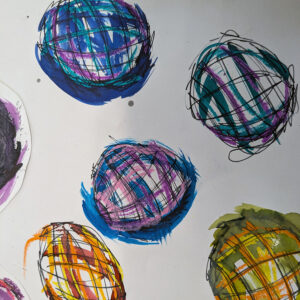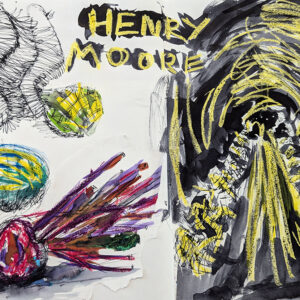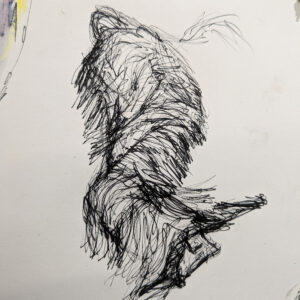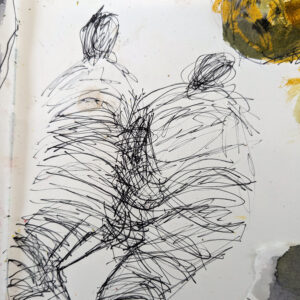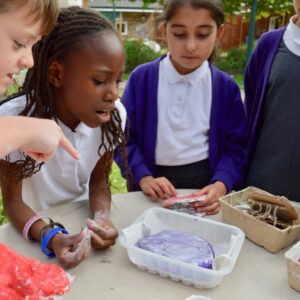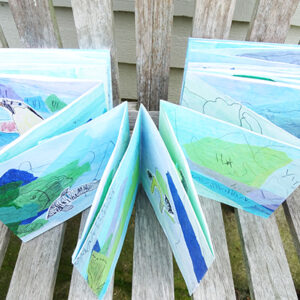Pathway for Years 5 & 6
Disciplines:
Drawing, Sketchbooks
Key Concepts:
-
That we use the word form to describe a three-dimensional shape.
-
That when we draw on two-dimensional surfaces we can use line, mark making, value, shape, colour, pattern and composition to help us create an illusion of form, mass or volume.
-
That contour marks can help to describe volume and form/mass.
-
That we can mix colours and use a range of media to create atmosphere and meaning in drawings.
-
That drawing and sculpture share a close relationship, and can inform each other.
This pathway enables pupils to consider how 2 dimensional drawing can convey a sense of form/mass and volume. By looking at the drawings of Sculptors’ Henry Moore, and Christo and Jeanne-Claude we can explore the ways in which they portrayed an illusion of form and meaning in their drawings.
Pupils will explore a range of mark-making, taking inspiration from artists’ work and will have the opportunity to experiment with a variety of materials.
Medium:
Drawing materials, Loose sheets of paper varying in size, shape and quality.
Artists: Henry Moore, Christo and Jeanne-Claude
If you use this resource in your setting, please tag us on social media: #InspiredBy @accessart (facebook, twitter) @accessart.org.uk (instagram) and share the url. Thank you!
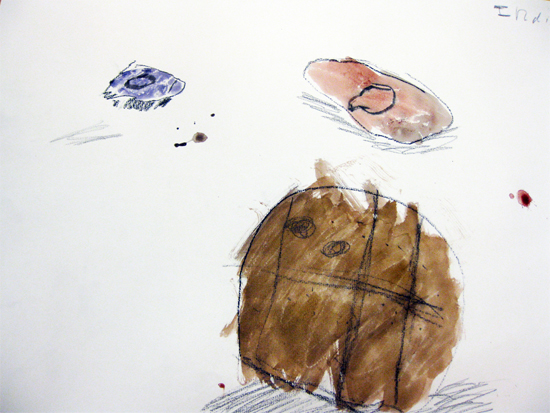
Additional Pathway
This pathway is an additional pathway to help you extend, develop or further personalise the AccessArt Primary Art Curriculum.
We suggest this pathway is used to replace a “Drawing and Sketchbooks” (Orange) Pathway “Typography and Maps” (Years 5 & 6) or “2D Drawing to 3D Making” (Years 5 & 6).
You may also like to use the activities in this pathway with a smaller group of children in an after school club or community context.
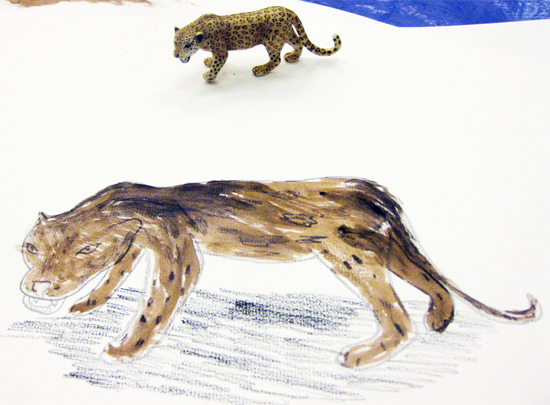

Teaching Notes
Find the MTP for this pathway here.
Curriculum Links
Maths: 2D and 3D shapes, weight, symmetry, angles, mass, volume
Science: Properties of objects, shadows, rocks
PSHE: Collaboration, Peer Discussion
I Can…
-
I can describe the difference between shape (2d) and form (3d).
-
I can explore how artists use their skills to make drawings which capture form.
-
I can use my sketchbook to record and reflect, collecting the ideas and approaches I like which I see other artists use.
-
I can use line, mark making, tonal values, colour, shape and/or composition to give my drawings a feeling of form.
-
I can share my work with others, and talk about my intention and the outcome. I can listen to their response and take their feedback on board.
-
I can appreciate the work of my classmates. I can listen to their intentions and share my response to their work.
Time
This pathway takes 6 weeks, with an hour per week. Shorten or lengthen the suggested pathway according to time and experience. Follow the stages in green for a shorter pathway or less complex journey.
Materials
Loose sheets of cartridge paper, Handwriting pens, Soft B pencils, Water-soluble graphite, Wax crayon, Watercolours, Ink
Pathway: Exploring Form Through Drawing
A PDF of this pathway can be found here.
-
The Aim of the Pathway
This pathway gives pupils the opportunity to explore how we can convey 3-dimensional form through drawing, conveying a sense of mass and volume. Inspired by the work of Sculptors Henry Moore and Christo and Jean-Claude, pupils will make creative responses through a series of drawing exercises on loose paper, resulting in a collection of drawings for a backwards sketchbook.
- Week 1: Introduce an artist
Introduce Henry Moore’s Shelter Drawings

Tentoonstelling beeldhouwwerken Sonsbeek Arnhem. Family Group ( Henry Moore ), Bestanddeelnr 905-1531.jpg Introduce students to the work of Henry Moore. Find out how Moore’s practise as a sculptor impacted his drawing style in this resource exploring “Henry Moore’s Shelter Drawings“.
Use the “Making Visual Notes” resource to help record on loose paper.
- Drawing Exercise
Drawing Hands

Create continuous line drawings of cupped hands to explore the word ‘concave’ and what this means in relation to form. Use the “Drawing Hands” resource to run this guided session. Create the drawings on loose sheets of paper.
- Week 2: Draw and Collage
Explore 3 Dimensions using Lego
 Invite pupils to create simple drawings of lego blocks on sheets of paper, considering angle and perspective. Use the “Explore 3 Dimensions using Lego” resource to help you guide this session. Work on loose sheets.
Invite pupils to create simple drawings of lego blocks on sheets of paper, considering angle and perspective. Use the “Explore 3 Dimensions using Lego” resource to help you guide this session. Work on loose sheets. - Week 3: Ink and Pen Drawings
See Three Shapes

Explore outline, form and shadow using the simple “See Three Shapes” exercise. Create drawings on loose sheets of paper.
-
Drawing with a Ruler

Challenge children to create observational “Drawings with a Ruler“. Consider how mark making can be used to contour, giving mass and form to the drawing. See “Ruler Drawings” created using more spherical subject matter and see how the drawings change.
Ask pupils to consider their favourite exercise from the session, which did they prefer and why?
- Week 4 & 5: Introduce an Artist
Introduce Christo and Jeanne-Claude
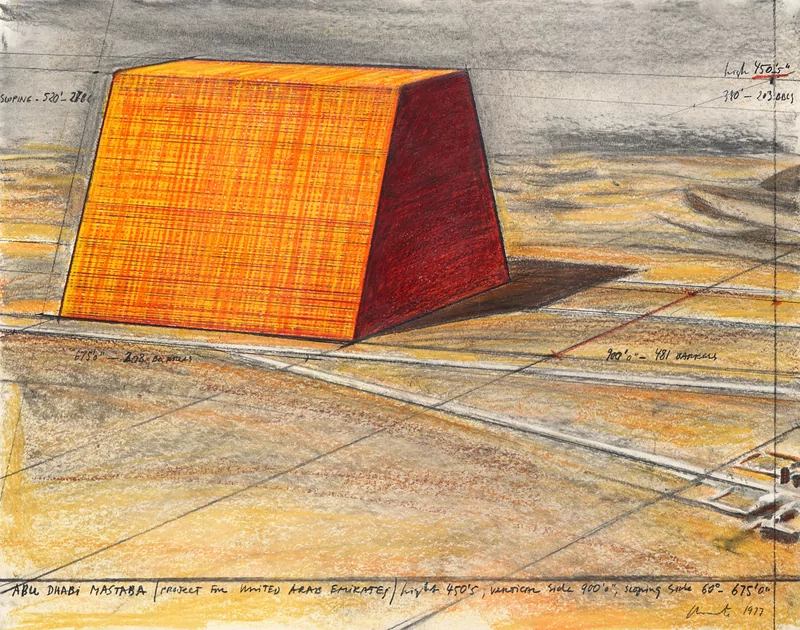
Christo
Abu Dhabi Mastaba (Project for United Arab Emirates)
Drawing 1977
Pencil, charcoal, wax crayon, and pastel
56 x 71 cm (22 x 28 in)
—
Collection Lilja Art Fund Foundation, Switzerland
Photo: Wolfgang Volz
© 1977 Christo and Jeanne-Claude FoundationIntroduce pupils to the work of Christo and Jeanne-Claude using “Talking Points: Christo and Jeanne-Claude“. Explore their drawings of wrapped monuments to see the first stages of their concepts.
- Drawing and Painting
Drawings With Mass

Bring in a physical subject matter, in this case potatoes and pebbles, and combine with the mark-making skills learnt previously, to explore how we can create a sense of form and 3d shape through line. Use the “Drawings with Mass“ resource here. Work on loose sheets of paper.
What kinds of lines might they use to make a drawing of an object which feels heavy and solid? Where is the shadow? Where is the light? How can they make it feel rounded?
- Week 6: Sketchbook
Backwards Sketchbook

Invite students to create a “Backwards Sketchbook” filled with loose works created throughout the pathway.
- Share & Celebrate
Share, Reflect, Discuss

Time to see the work which has been made, talk about intention and outcome.
Invite children to display the work in a clear space and walk around the work as if they are in a gallery. Give the work the respect it deserves. Remind the children of their hard work.
If you have class cameras or tablets, invite the children to document their work, working in pairs or teams.
Use the resource here to help you run a class “crit” to finish the project.
